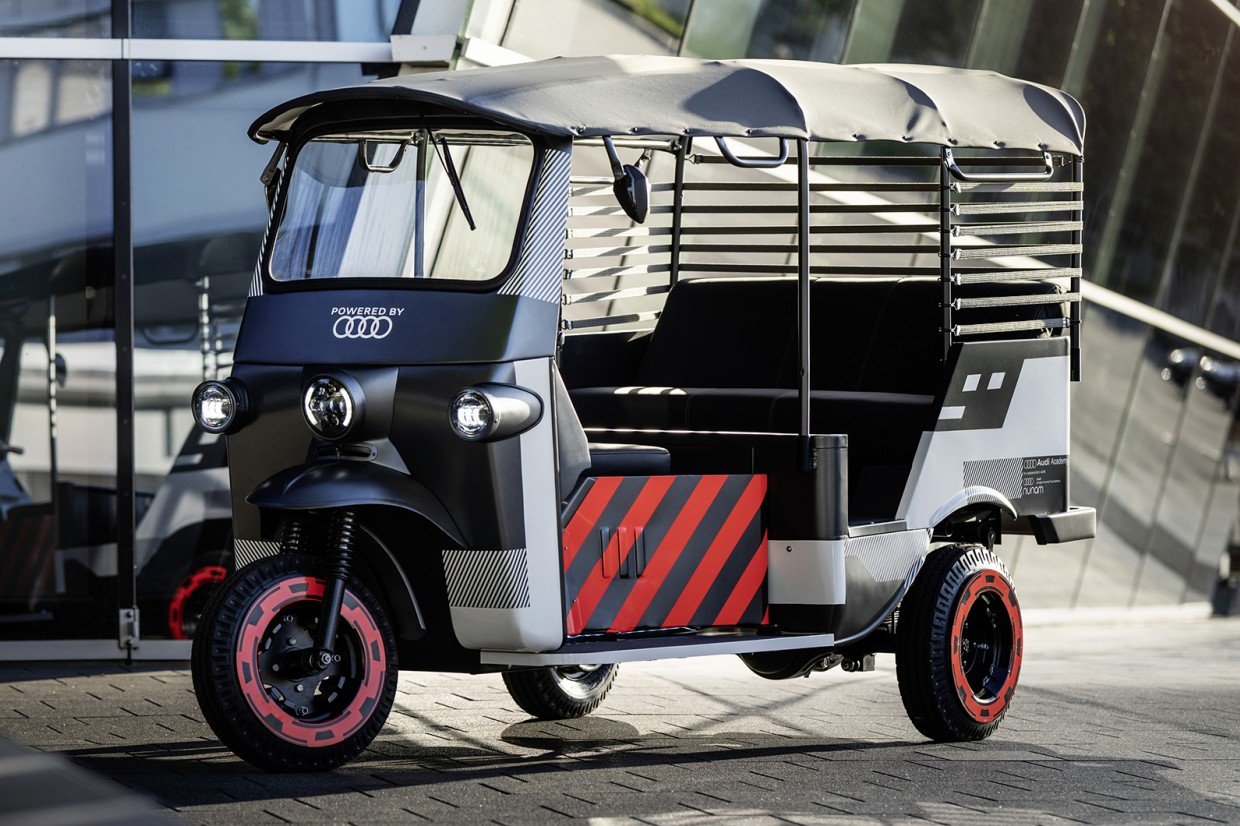Forget the e-tron, the crazy skysphere concept and take a look at Audi’s latest invention, the Audi e-rickshaw.
Audi has unveiled its most radical vehicle yet, a battery powered rickshaw. This is in partnership with non-profit Nunam, a company who uses battery technology to improve access to clean energy. Nunam will introduce three electric rickshaws to the roads of India next year.
Powered by batteries taken from Audi’s e-tron test fleet, the e-rickshaw was developed alongside the trainman team from Audi’s Neckarsulm plant. This project will determine the ‘second-life’ recyclability of used car batteries and is also intended to assist in creating job opportunities for more women in India, by providing them with e-rickshaws as transport for courier work.
The possibility of second-life batteries is being trailed by Audi, through an Audi Charging Hub concept. This Charigng Hub uses car batteries to store charge from a local grid so it can keep up with demand without overloading the grid. Most rickshaws in India run on lead-acid which comes with a shorter life span. The Audi e-rickshaw fits into the Indian market because of its low-weight and suitability for the typical short, low-speed journeys.
To avoid charging the vehicles from the coal powered public energy grid, Nunam are using solar panels to the charge a ‘second-life- battery so the rickshaw can stay permanently charged.
Nunman are intending to consistently monitor the performance of the battery and publish the subsequent data on an open-source platform, meaning other firms could develop similar technologies. Audi and Nunman are also intending for ‘third-life’ batteries, this meaning collecting the used-up rickshaw batteries and then using them for less-power intensive functions, such as LED lighting.
The Audi electric rickshaw also features a splash proof underfloor and it built up from as many recycled materials as possible.

